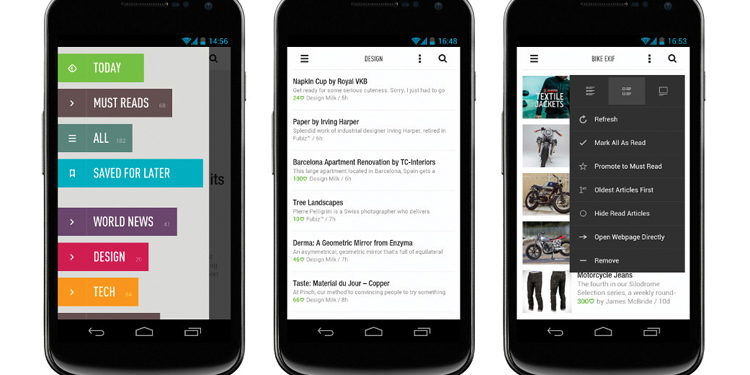Consume the latest content from your favorite sites with a feed reader
BY Justin Torres

LISTEN
RSS feeds empower you to aggregate news and updates from across the net in a single place.
Really Simple Syndication is just that
A great upside of the modern Web is the push it has spawned to create richer and more relevant content. If you aren’t already using a feed reader, then you’re likely missing great articles or blog posts by going site-to-site for updates.
RSS feeds were invented as a way to easily port information from a website, and RSS readers take advantage of that. Just about every website with updates publishes an RSS feed, which makes it easier for software to read the content than it is to read HTML, which contains markup only a browser cares about.
News aggregators will pull syndication feeds from multiple sources and serve them up from a central location, eliminating the hassle of hopping around the web for your news and information fix.
Social networks will often implement some kind of ‘follow’ or ‘subscribe’ feature, which is similar to the underlying principle of really simple syndication. While this makes it easier to stay on top of updates, it still requires you to check multiple sites separately, giving feed readers an advantage in simplicity and potential time saving benefit.
The correct way to Internet correctly
There’s no shortage of content to consume on the Internet, so your first order of business should be finding a way to stay on top of it efficiently. Over 30 different feed readers exist that work on every piece of technology to which you might have access.
All of the RSS readers basically work in the same way: you add sources and the respective updates are combined into a single “stream” with an interface similar to your email inbox. It’s also common to see features like bookmarking, trending stories and easy sharing of posts.
Google Reader was a community favorite, but plans to push users into Google+ ultimately meant the end for the platform on July 1st of this year. This was a huge blow to the user base, as well as several other aggregators that were built on top of Google Reader.
Don’t panic, the replacements are here
The fall of GReader was a surprise to many because they weren’t aware of how many alternative feed readers already existed. Here are some of the more popular options:
Feedly (feedly.com)
One of the services that relied on Google Reader as their backbone was Feedly. Rather than taking a turn for the worse, Feedly’s response to the shutdown was to step in and become the very backbone they - and other products - relied on. Their product is completely cloud-powered for the user who wants to access their news from any desktop or mobile device.
Digg Reader (digg.com/reader)
Another reader born from the ashes of its previous owner is Digg Reader. They hammered out a slick news reader for desktop and iDevices with a clean interface that removes layout elements and only displays content for your enjoyment. They also have a background algorithm to detect trending stories to feature on their front page.
Flipboard (flipboard.com)
You’ll enjoy using Flipboard’s beautiful app, as it presents your news in a magazine layout with butter-smooth effects. Flipboard is designed to make it as easy as possible to find and share articles you enjoy back to your own blog or your social followers. There are also pre-built channels for general topics like technology, food & health, and world news to help you get started.
News hungry? Start feeding.
With more devices to consume digital content and even more sites providing it, consolidating your daily news routine is a must. If you do your reading from your desktop, phone, tablet, or all of them, there’s a feed reader ready to for you. Put an end to information overload by checking your favorite sites for the ubiquitous “orange pulse” RSS icon and start populating your newsreader today.
LATEST STORIES



